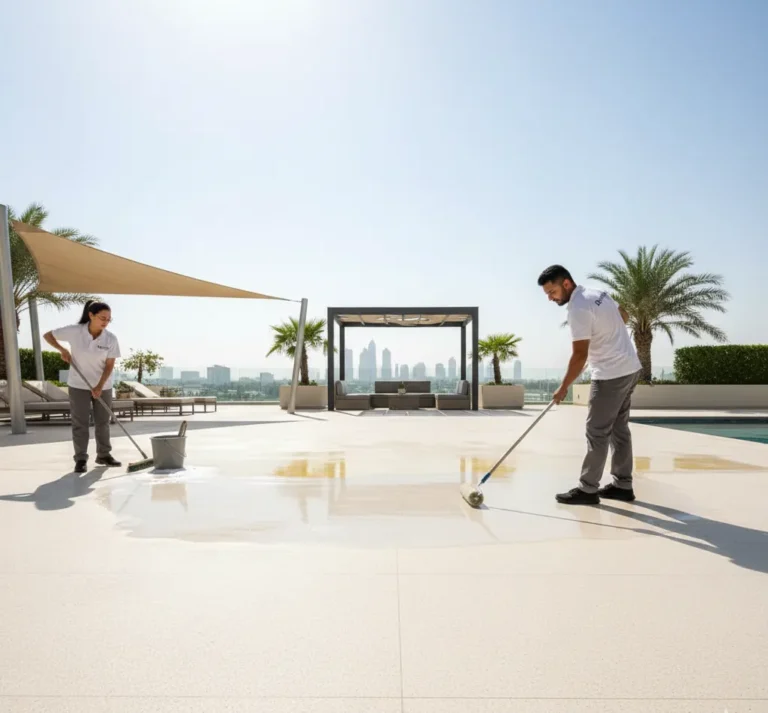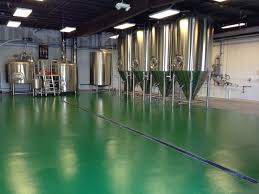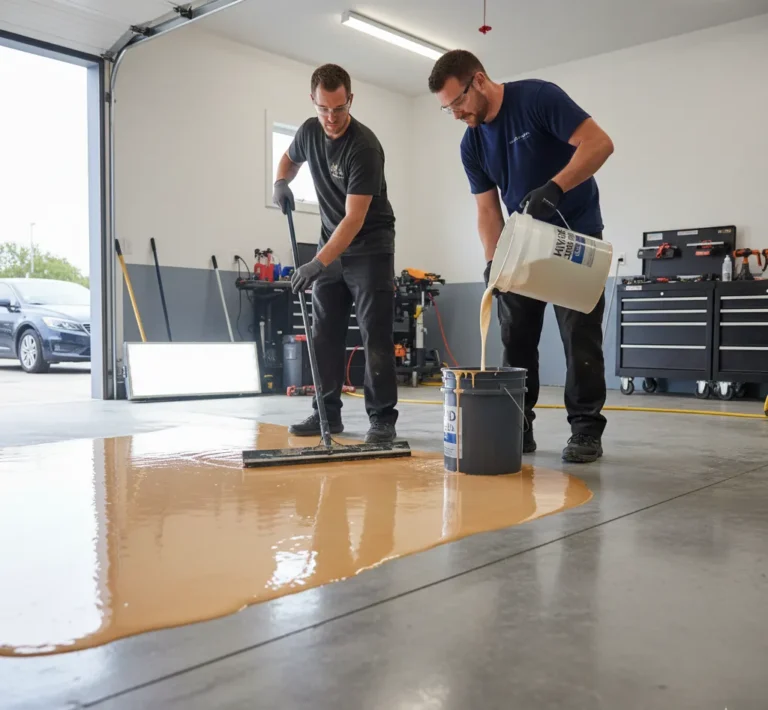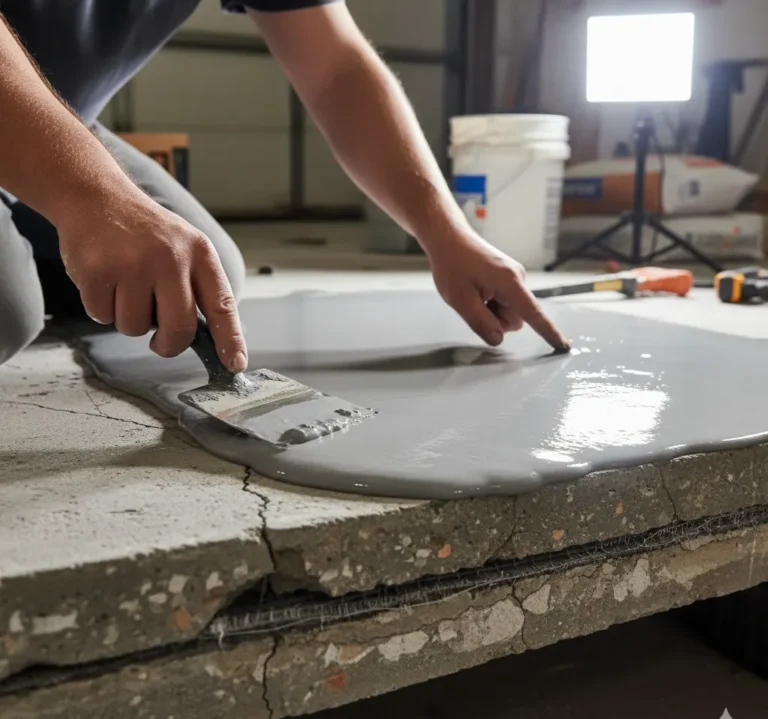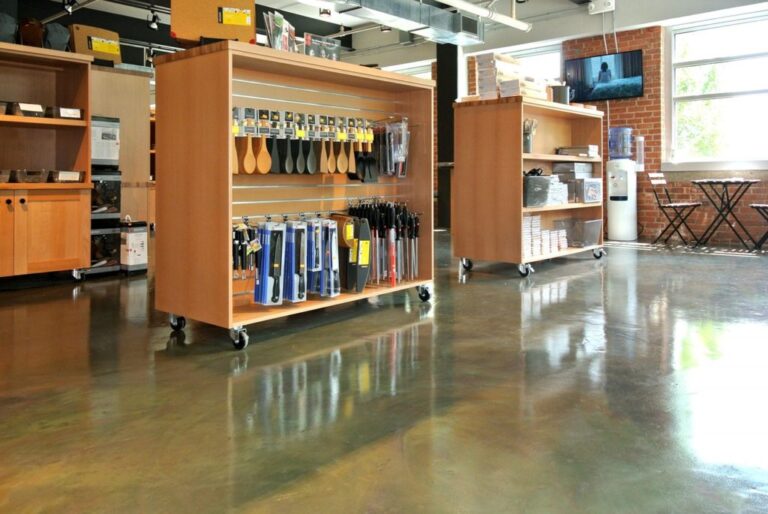What Are Microtopping Floors?
Microtopping floors are a modern flooring solution that offers a sleek and seamless finish. They are composed of a thin layer of cement-based coating that can be applied over existing surfaces. This makes them an ideal choice for those looking to revamp their space without the hassle of removing old flooring.
Composition and Application
Microtopping is made from a blend of cement, polymers, and fine aggregates. This unique composition allows it to adhere to various surfaces, including concrete, wood, and tiles. The application process involves preparing the surface, applying the microtopping mixture, and then sealing it for durability.
- Made from cement, polymers, and fine aggregates
- Can be applied over existing surfaces
- Requires surface preparation, application, and sealing
Advantages of Microtopping
One of the main advantages of microtopping is its versatility. It can be customized to achieve different colors and textures, making it suitable for various design aesthetics. Additionally, microtopping is durable and resistant to wear and tear, making it a practical choice for high-traffic areas.
- Versatile in color and texture customization
- Durable and resistant to wear
- Suitable for high-traffic areas
Design Flexibility
Microtopping floors offer unparalleled design flexibility. They can mimic the appearance of natural stone, wood, or even metal, providing endless possibilities for creative expression. This flexibility makes them a popular choice for designers looking to create unique and personalized spaces.
- Can mimic natural stone, wood, or metal
- Offers endless design possibilities
- Popular for creating unique spaces
Pop-Up Shops and Temporary Retail Spaces
Pop-up shops and temporary retail spaces have become a significant trend in the retail industry. These short-term setups allow brands to engage with customers in a dynamic and interactive way, often leading to increased brand awareness and sales.
The Rise of Ephemeral Retail
Ephemeral retail, or pop-up shops, have gained popularity due to their ability to create buzz and excitement around a brand. These temporary spaces allow businesses to test new markets, launch products, and engage with customers in a unique setting.
- Creates buzz and excitement
- Allows businesses to test new markets
- Engages customers in unique settings
Benefits of Pop-Up Stores
Pop-up stores offer several benefits, including lower costs and reduced risk compared to traditional retail spaces. They provide an opportunity for brands to experiment with different concepts and gather valuable customer feedback.
- Lower costs and reduced risk
- Opportunity to experiment with concepts
- Gather valuable customer feedback
Designing for Temporary Spaces
Designing for temporary retail spaces requires a focus on flexibility and adaptability. Elements such as modular furniture, versatile lighting, and adaptable flooring options like microtopping are essential for creating a functional and appealing environment.
- Focus on flexibility and adaptability
- Use of modular furniture and versatile lighting
- Incorporation of adaptable flooring options
Flexible Design Solutions for Retail
Flexible design solutions are crucial for creating dynamic and engaging retail environments. These solutions allow for easy reconfiguration and adaptation to changing needs and trends.
Adaptable Flooring Options
Adaptable flooring options, such as microtopping, provide the flexibility needed for temporary retail spaces. They can be easily installed and removed, making them ideal for pop-up shops and other short-term setups.
- Easily installed and removed
- Ideal for temporary retail spaces
- Provides necessary flexibility
Modular Furniture and Fixtures
Modular furniture and fixtures offer the ability to quickly change the layout and design of a retail space. This adaptability is essential for keeping the space fresh and engaging for customers.
- Allows quick layout changes
- Keeps space fresh and engaging
- Essential for adaptability
Versatile Lighting Systems
Versatile lighting systems can dramatically alter the ambiance of a retail space. Adjustable lighting allows for the creation of different moods and highlights specific areas or products.
- Alters ambiance dramatically
- Creates different moods
- Highlights specific areas or products
Microcement vs. Traditional Flooring Options
When comparing microcement to traditional flooring options, several factors come into play, including durability, aesthetics, and cost.
Durability and Maintenance
Microcement is known for its durability and low maintenance requirements. Unlike traditional flooring, it does not require frequent polishing or sealing, making it a cost-effective option in the long run.
- Durable and low maintenance
- No frequent polishing or sealing needed
- Cost-effective in the long run
Aesthetic Versatility
Microcement offers aesthetic versatility that traditional flooring options cannot match. It can be customized to achieve a wide range of looks, from industrial chic to elegant sophistication.
- Offers unmatched aesthetic versatility
- Customizable for various looks
- Suitable for different design styles
Cost-Effectiveness
While the initial cost of microcement may be higher than some traditional options, its durability and low maintenance make it a cost-effective choice over time. It eliminates the need for frequent repairs and replacements.
- Initial cost may be higher
- Durable and low maintenance
- Eliminates frequent repairs and replacements
Sustainable Practices in Temporary Retail Design
Sustainability is becoming increasingly important in retail design, with a focus on eco-friendly materials and energy-efficient solutions.
Eco-Friendly Materials
Using eco-friendly materials in temporary retail spaces helps reduce the environmental impact. Materials like recycled wood and sustainable fabrics are popular choices for creating a green retail environment.
- Reduces environmental impact
- Use of recycled wood and sustainable fabrics
- Popular for green retail environments
Energy-Efficient Lighting
Energy-efficient lighting solutions, such as LED lights, are essential for reducing energy consumption in retail spaces. They provide bright, long-lasting illumination while minimizing electricity usage.
- Reduces energy consumption
- Use of LED lights
- Provides bright, long-lasting illumination
Recyclable and Reusable Elements
Incorporating recyclable and reusable elements in retail design helps minimize waste and promote sustainability. These elements can be easily repurposed for future use, reducing the need for new materials.
- Minimizes waste and promotes sustainability
- Easily repurposed for future use
- Reduces need for new materials
Applications of Microtopping in Retail Spaces
Microtopping is a versatile material that can be used in various applications within retail spaces, including floors, walls, and custom furniture.
Floors
Microtopping is commonly used for flooring due to its seamless finish and durability. It provides a modern and sleek look that complements various retail designs.
- Seamless finish and durability
- Modern and sleek look
- Complements various retail designs
Walls
Microtopping can also be applied to walls, creating a cohesive and stylish look throughout the retail space. It offers the same design flexibility as flooring applications.
- Creates cohesive and stylish look
- Offers design flexibility
- Suitable for various wall designs
Custom Furniture
Microtopping can be used to create custom furniture pieces, adding a unique touch to the retail environment. Its versatility allows for the creation of bespoke designs that enhance the overall aesthetic.
- Adds unique touch to retail environment
- Allows for bespoke designs
- Enhances overall aesthetic
Installation Process for Microtopping Floors
The installation process for microtopping floors involves several key steps, including surface preparation, application techniques, and curing and sealing.
Surface Preparation
Proper surface preparation is crucial for ensuring the adhesion and longevity of microtopping. This involves cleaning the existing surface and repairing any cracks or imperfections.
- Ensures adhesion and longevity
- Involves cleaning and repairing
- Crucial for successful installation
Application Techniques
Microtopping is applied using specialized techniques to achieve the desired finish. This may involve multiple layers and the use of different tools to create various textures and effects.
- Specialized techniques for desired finish
- May involve multiple layers
- Creates various textures and effects
Curing and Sealing
After application, microtopping requires proper curing and sealing to enhance its durability and appearance. This step is essential for protecting the surface from wear and tear.
- Enhances durability and appearance
- Essential for surface protection
- Involves curing and sealing
Maintenance and Care for Microtopping Surfaces
Proper maintenance and care are essential for preserving the appearance and longevity of microtopping surfaces.
Daily Cleaning Routines
Regular cleaning is important for maintaining the appearance of microtopping floors. This involves sweeping or vacuuming to remove dirt and debris, followed by mopping with a mild cleaner.
- Maintains appearance and longevity
- Involves sweeping or vacuuming
- Use of mild cleaner for mopping
Long-Term Preservation
Long-term preservation of microtopping surfaces requires periodic sealing to protect against stains and scratches. This helps maintain the surface’s durability and aesthetic appeal.
- Requires periodic sealing
- Protects against stains and scratches
- Maintains durability and appeal
Color and Texture Options for Microtopping
Microtopping offers a wide range of color and texture options, allowing for customization to suit any design preference.
Custom Color Blending
Custom color blending allows for the creation of unique shades and tones, providing endless possibilities for personalization. This makes microtopping a versatile choice for various design styles.
- Allows creation of unique shades
- Provides endless personalization possibilities
- Versatile for various design styles
Texture Techniques
Different texture techniques can be used to achieve various finishes, from smooth and polished to rough and industrial. This flexibility allows for the creation of diverse looks to match any aesthetic.
- Achieves various finishes
- From smooth to rough textures
- Matches diverse aesthetics
FAQs
What is the difference between microtopping and polished concrete?
Microtopping and polished concrete are both popular flooring options, but they differ in composition and application. Microtopping is a thin layer of cement-based coating applied over existing surfaces, while polished concrete involves grinding and polishing the concrete slab itself. Microtopping offers more design flexibility, while polished concrete is known for its durability and shine. Interactive museum displays microtopping surfaces make exhibits more fun and hands-on for visitors These special surfaces let people touch and explore museum items in a safe way Sleek workspace surfaces make your desk look clean and modern They give you plenty of room to work and keep things organized
Uberdek exterior transformation makes old houses look brand new It changes the outside of homes quickly and easily without messy construction Noise reduction microtopping is a special coating that helps make floors quieter It can be applied to existing floors to reduce the sound of footsteps and other noises
How long do microtopping floors last?
Microtopping floors are designed to be durable and long-lasting. With proper maintenance, they can last for many years, making them a cost-effective flooring solution. Regular cleaning and sealing can help extend their lifespan even further.
Can microtopping be applied over existing floors?
Yes, microtopping can be applied over existing floors, making it a convenient option for renovations. It adheres well to various surfaces, including concrete, wood, and tiles, allowing for a seamless transformation without the need for demolition.
Are microtopping floors suitable for high-traffic areas?
Microtopping floors are suitable for high-traffic areas due to their durability and resistance to wear. They can withstand heavy foot traffic without showing signs of damage, making them an ideal choice for busy retail environments.
How much does microtopping cost per square foot?
The cost of microtopping varies depending on factors such as the size of the area and the complexity of the design. On average, microtopping can cost between $5 to $15 per square foot, making it a competitive option compared to other flooring solutions.
